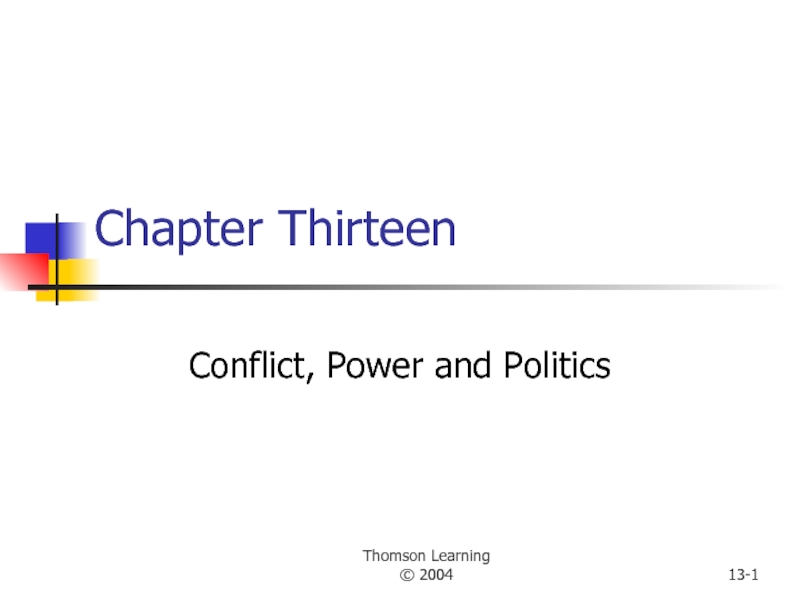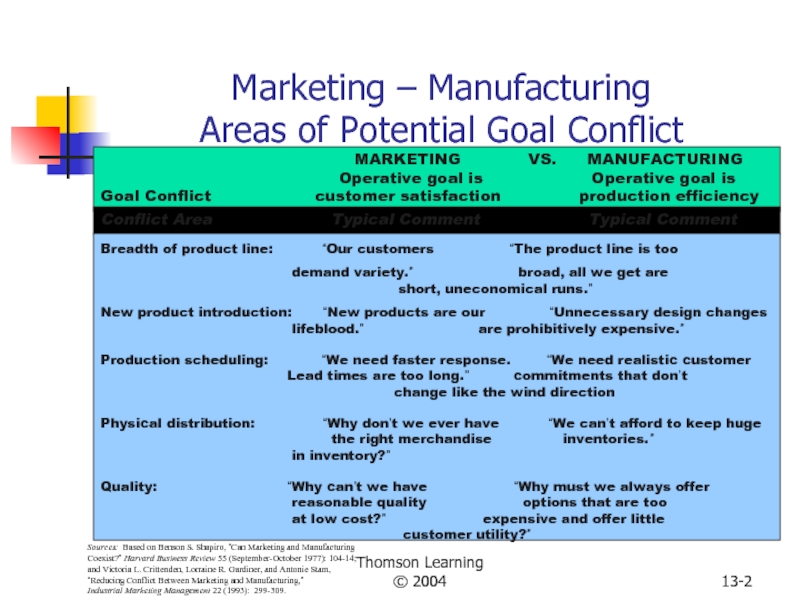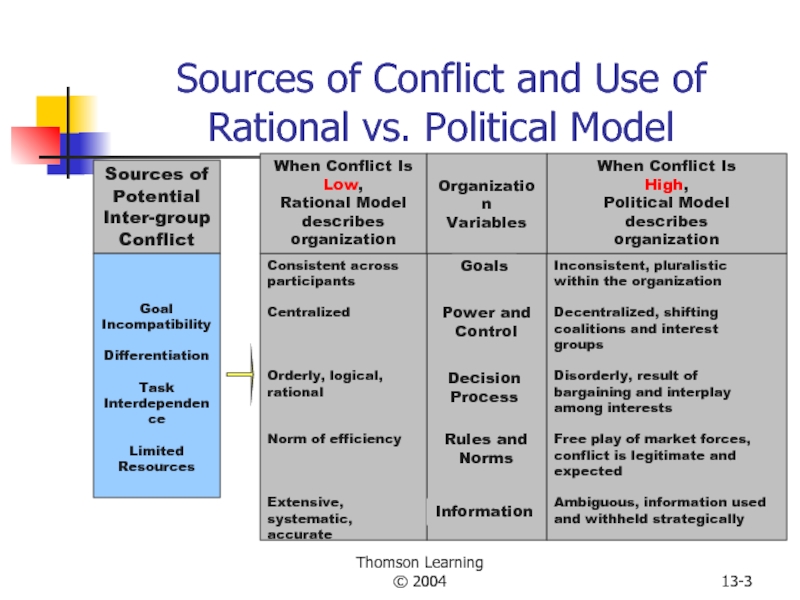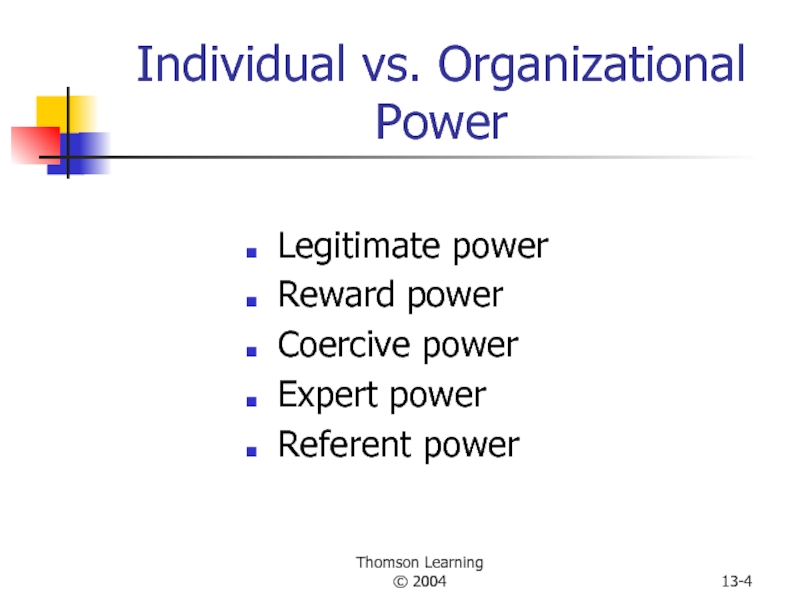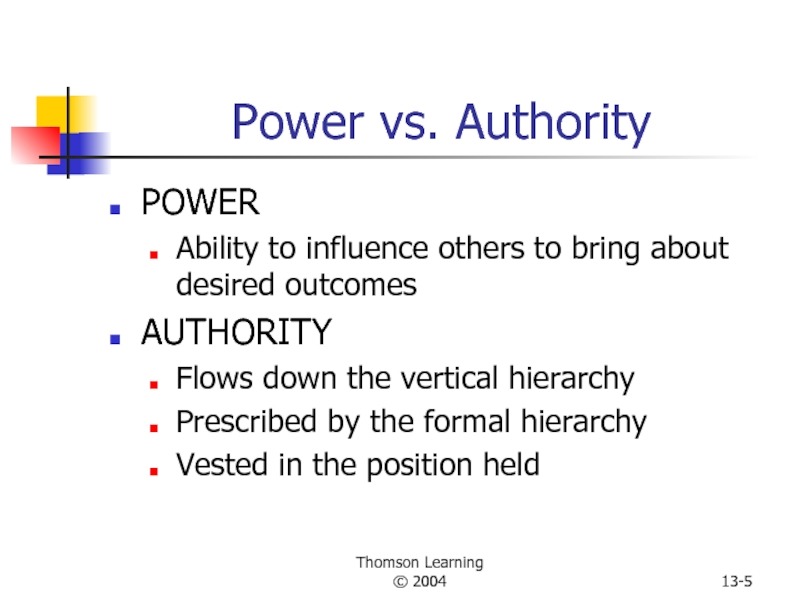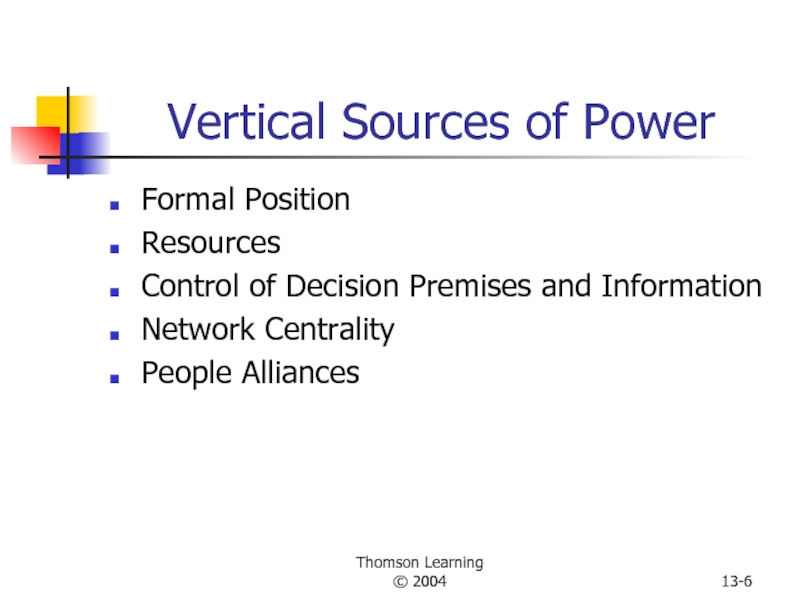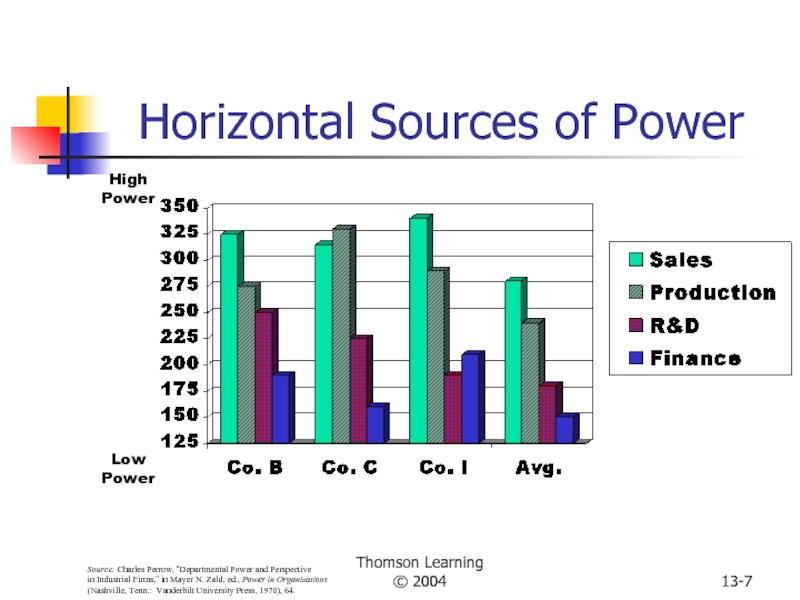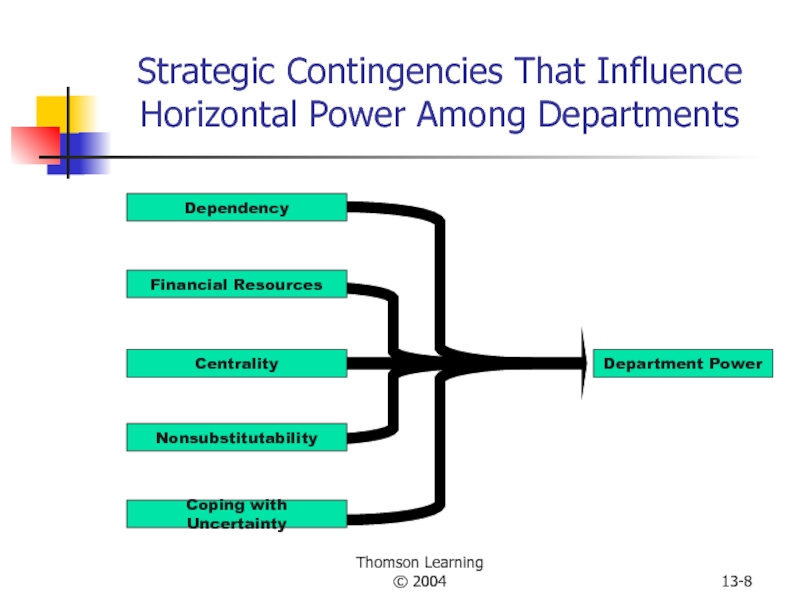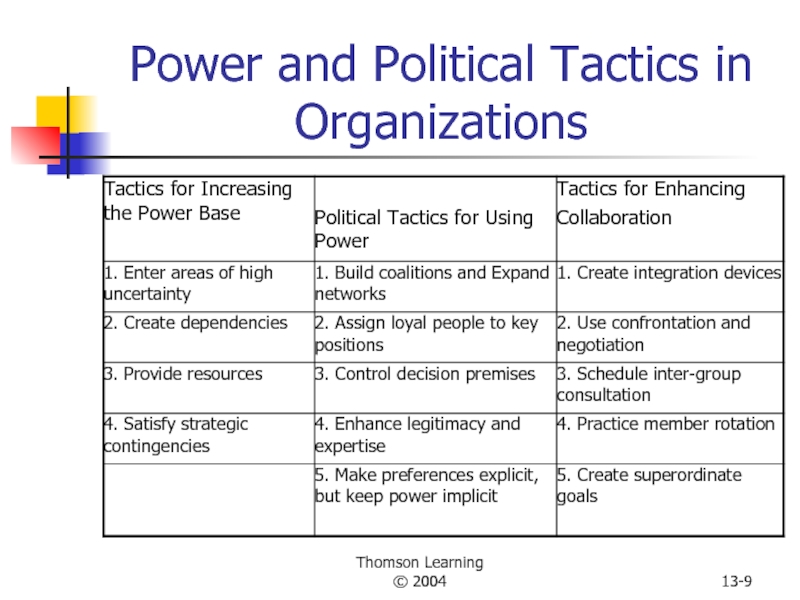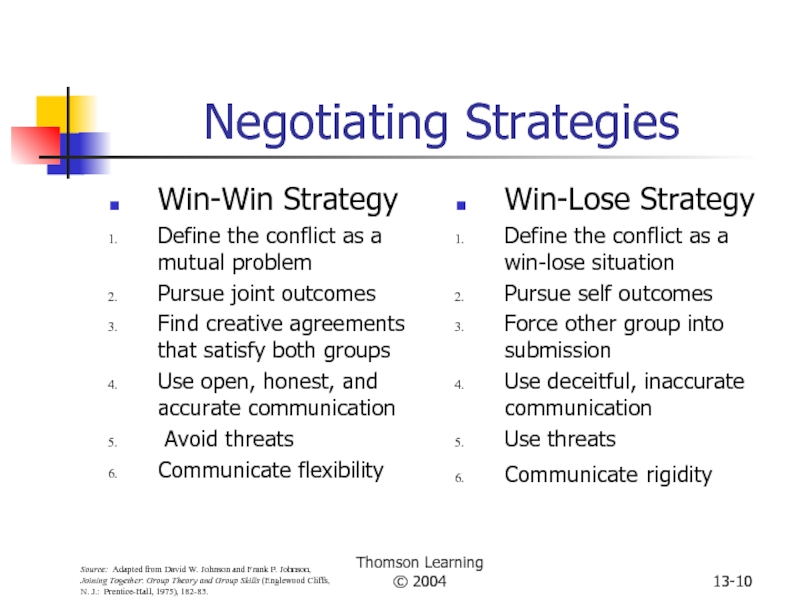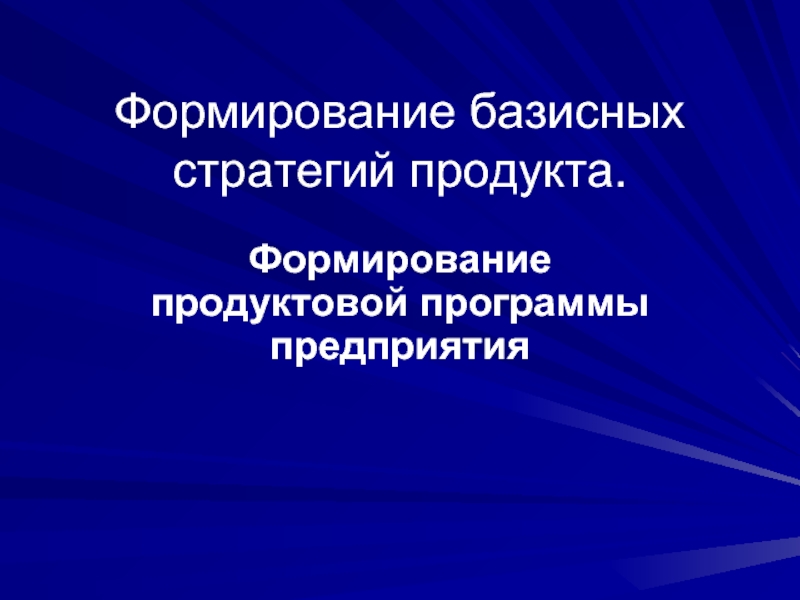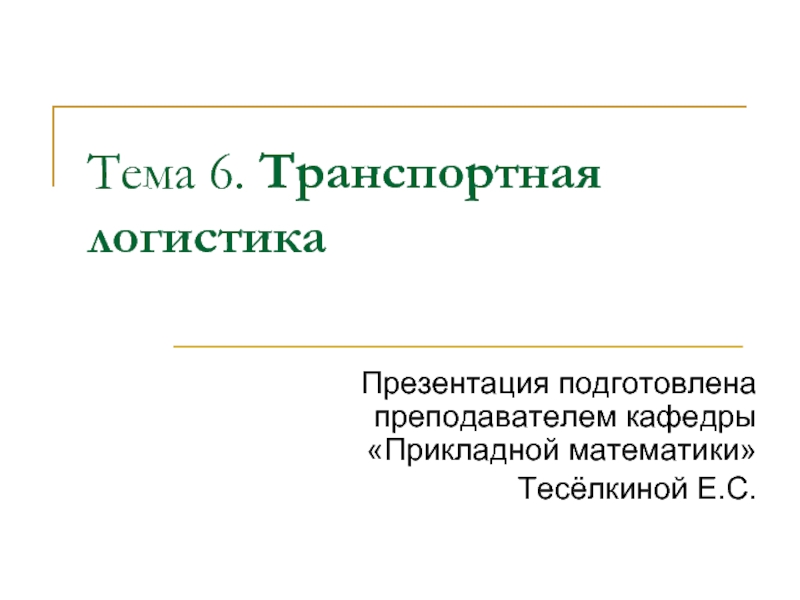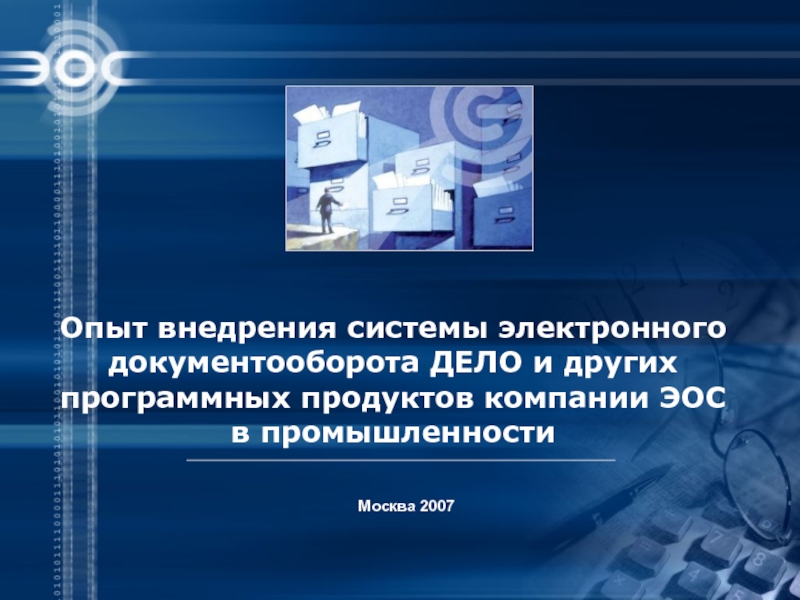- Главная
- Разное
- Дизайн
- Бизнес и предпринимательство
- Аналитика
- Образование
- Развлечения
- Красота и здоровье
- Финансы
- Государство
- Путешествия
- Спорт
- Недвижимость
- Армия
- Графика
- Культурология
- Еда и кулинария
- Лингвистика
- Английский язык
- Астрономия
- Алгебра
- Биология
- География
- Детские презентации
- Информатика
- История
- Литература
- Маркетинг
- Математика
- Медицина
- Менеджмент
- Музыка
- МХК
- Немецкий язык
- ОБЖ
- Обществознание
- Окружающий мир
- Педагогика
- Русский язык
- Технология
- Физика
- Философия
- Химия
- Шаблоны, картинки для презентаций
- Экология
- Экономика
- Юриспруденция
Conflict, power and politics. (Chapter 13) презентация
Содержание
- 1. Conflict, power and politics. (Chapter 13)
- 2. Thomson Learning © 2004 13- Marketing –
- 3. Thomson Learning © 2004 13- Sources of
- 4. Thomson Learning © 2004 13- Individual vs.
- 5. Thomson Learning © 2004 13- Power vs.
- 6. Thomson Learning © 2004 13- Vertical Sources
- 7. Thomson Learning © 2004 13- Horizontal Sources
- 8. Thomson Learning © 2004 13-
- 9. Thomson Learning © 2004 13- Power and Political Tactics in Organizations
- 10. Thomson Learning © 2004 13- Win-Win Strategy
Слайд 2Thomson Learning
© 2004
13-
Marketing – Manufacturing
Areas of Potential Goal Conflict
Sources: Based
Coexist?” Harvard Business Review 55 (September-October 1977): 104-14;
and Victoria L. Crittenden, Lorraine R. Gardiner, and Antonie Stam,
“Reducing Conflict Between Marketing and Manufacturing,”
Industrial Marketing Management 22 (1993): 299-309.
Слайд 3Thomson Learning
© 2004
13-
Sources of Conflict and Use of Rational vs. Political
Sources of
Potential
Inter-group
Conflict
Goal
Incompatibility
Differentiation
Task
Interdependence
Limited
Resources
Слайд 4Thomson Learning
© 2004
13-
Individual vs. Organizational Power
Legitimate power
Reward power
Coercive power
Expert power
Referent power
Слайд 5Thomson Learning
© 2004
13-
Power vs. Authority
POWER
Ability to influence others to bring about
AUTHORITY
Flows down the vertical hierarchy
Prescribed by the formal hierarchy
Vested in the position held
Слайд 6Thomson Learning
© 2004
13-
Vertical Sources of Power
Formal Position
Resources
Control of Decision Premises and
Network Centrality
People Alliances
Слайд 7Thomson Learning
© 2004
13-
Horizontal Sources of Power
High
Power
Low
Power
Source: Charles Perrow, “Departmental Power and
in Industrial Firms,” in Mayer N. Zald, ed., Power in Organizations
(Nashville, Tenn.: Vanderbilt University Press, 1970), 64.
Слайд 8Thomson Learning
© 2004
13-
Strategic Contingencies That Influence Horizontal Power Among Departments
Dependency
Financial Resources
Centrality
Nonsubstitutability
Coping
Department Power
Слайд 10Thomson Learning
© 2004
13-
Win-Win Strategy
Define the conflict as a mutual problem
Pursue joint
Find creative agreements that satisfy both groups
Use open, honest, and accurate communication
Avoid threats
Communicate flexibility
Win-Lose Strategy
Define the conflict as a win-lose situation
Pursue self outcomes
Force other group into submission
Use deceitful, inaccurate communication
Use threats
Communicate rigidity
Negotiating Strategies
Source: Adapted from David W. Johnson and Frank P. Johnson,
Joining Together: Group Theory and Group Skills (Englewood Cliffs,
N. J.: Prentice-Hall, 1975), 182-83.
